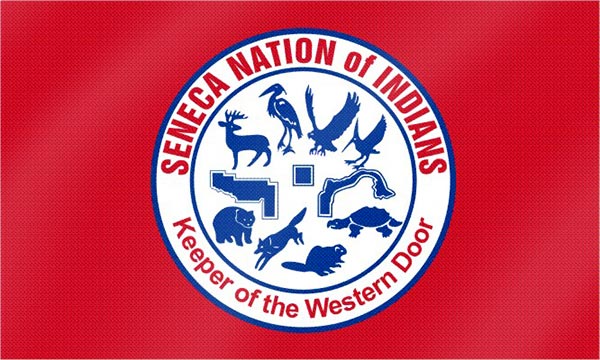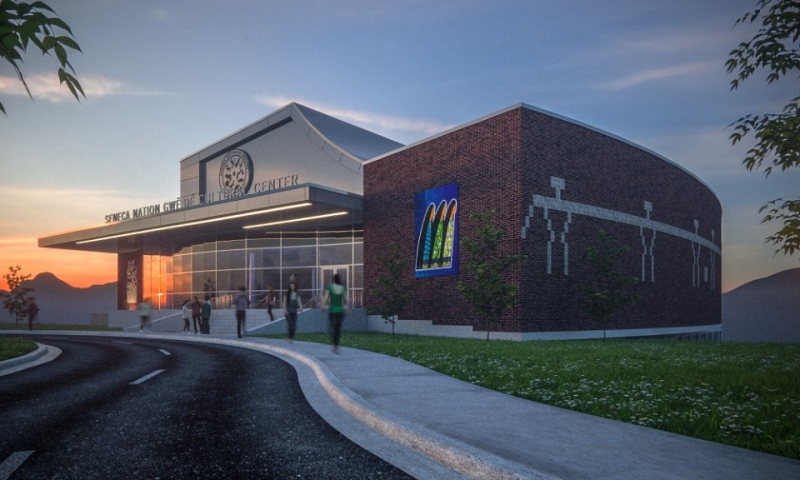
The Peterson Preserve and our museum are located in the traditional territories of the Seneca Nation. The Seneca were the largest of six Native American nations which comprised the Iroquois Confederacy or Six Nations, a democratic government that pre-dates the United States Constitution.
The Seneca are also known as the “Keeper of the Western Door,” for the Seneca are the westernmost of the Six Nations. At the time of the formation of the Iroquois League, the original five nations of the Iroquois League occupied large areas of land in the Northeast USA and Southeast Canada. The historical Seneca occupied territory throughout the Finger Lakes area in Central New York, and in the Genesee Valley in Western New York, living in longhouses on the riversides. The villages were well fortified with wooden stake fences, just one of the many industrious undertakings.
Today the Seneca Nation currently has a total enrolled population of over 8,000 citizens. The Seneca Nation supports its own people and benefits surrounding communities with a variety of cultural, educational and economic efforts.
(Information and “hero” photo courtesy of the Seneca Nation of Indians.)
The Seneca-Iroquois National Museum – located in nearby Salamanca – proudly houses an extensive collection of Hodinöhsö:ni’ historical and traditionally designed decorative and every-day-use items and archaeological artifacts. The Museum, along with the Seneca Nation Archives Department, are the safe keepers of historical documents regarding Onöndowa’ga:’ and Hodinöhsö:ni’. (Information and photo courtesy of Seneca-Iroqois National Museum.)
Clans are the traditional social units for Seneca people. There are four bird clans: deer, hawk, heron and snipe. There are also four animal clans: turtle, beaver, wolf and bear. These clans are represented on the symbol for the Seneca Nation.


